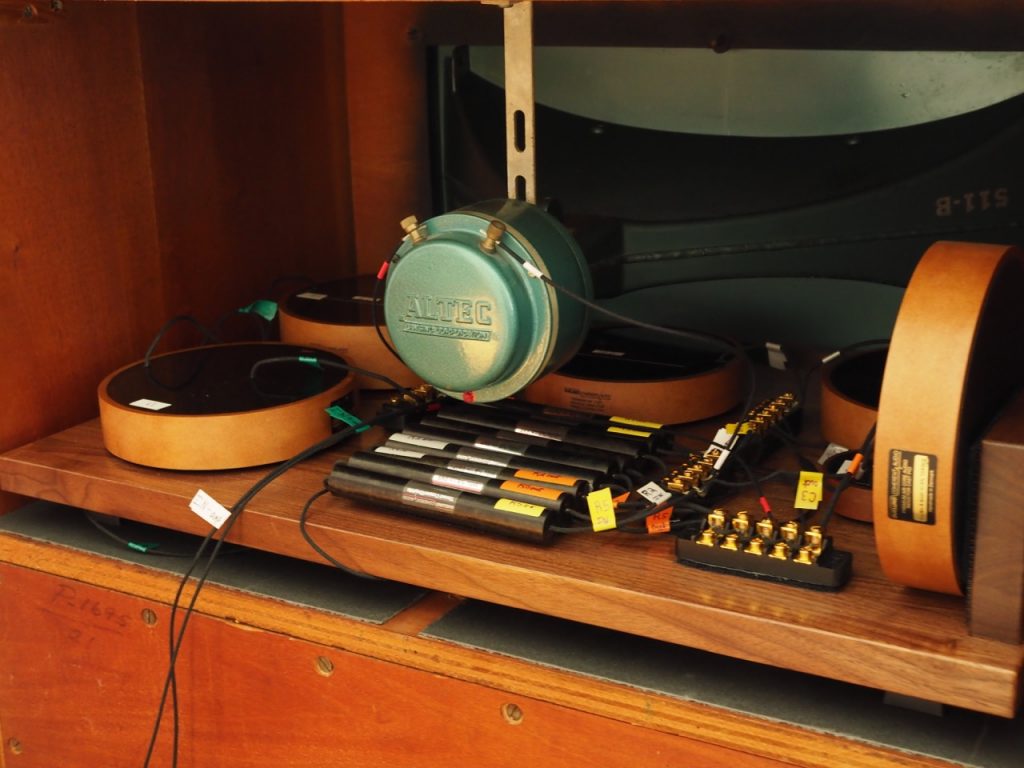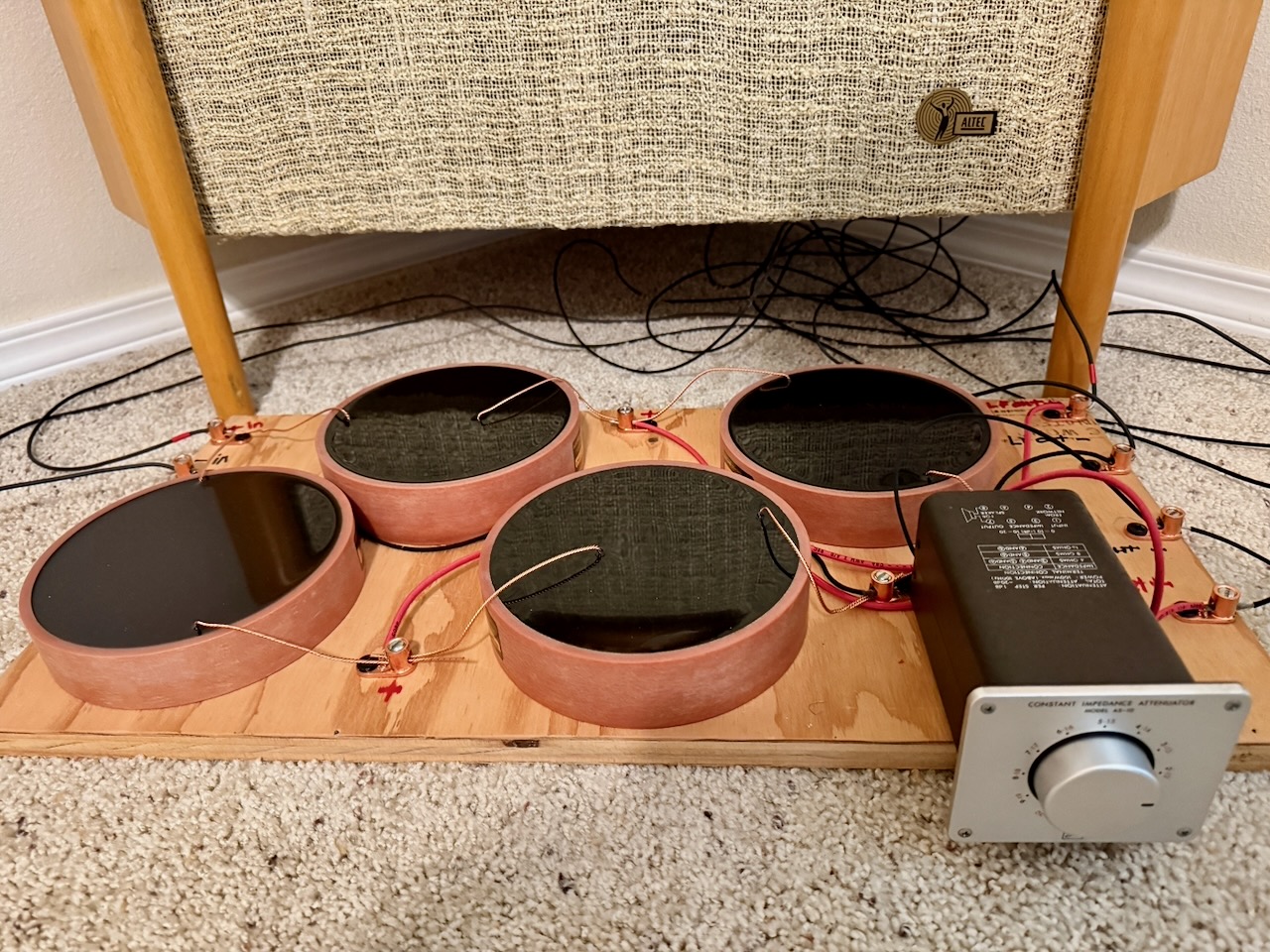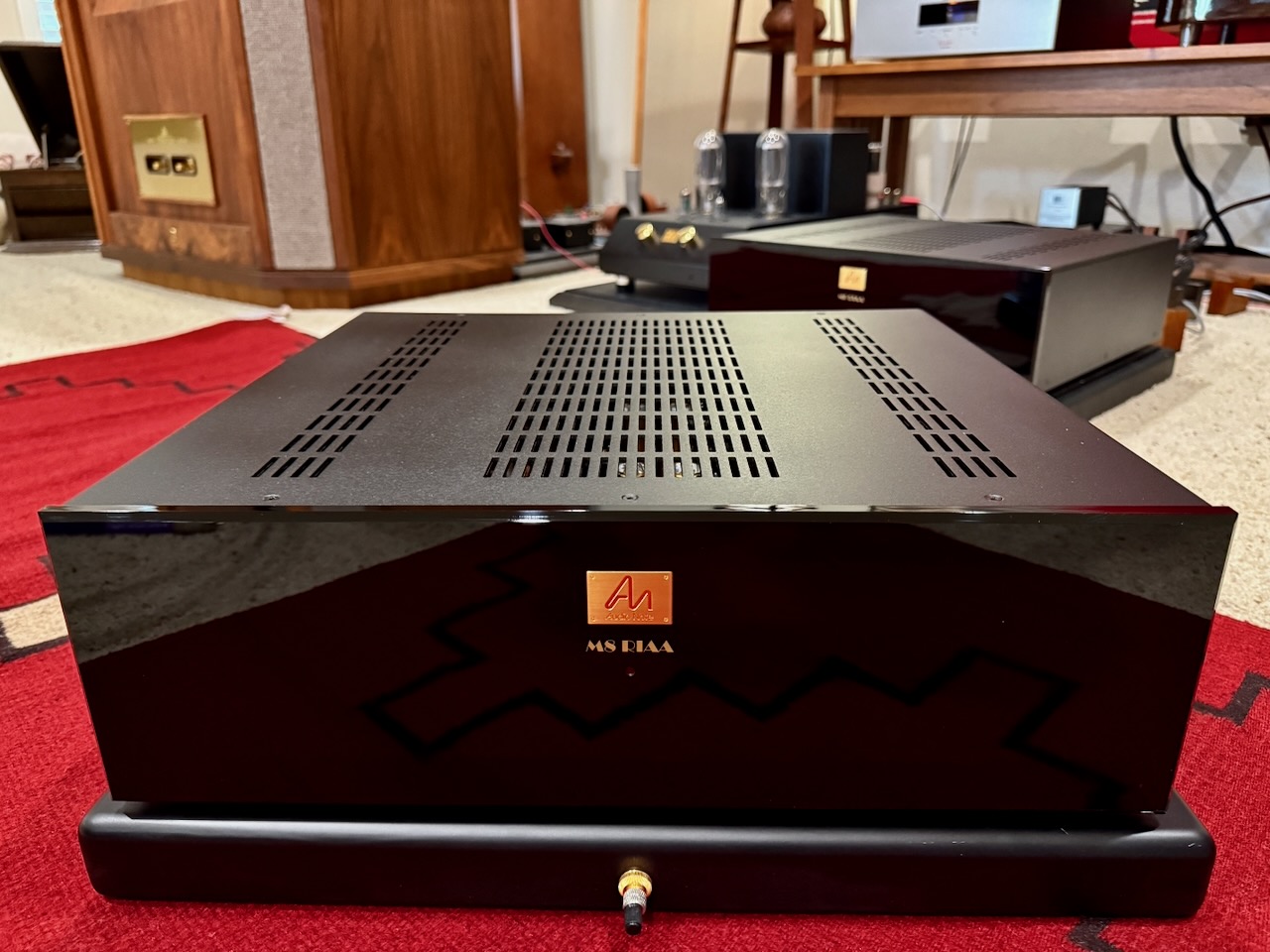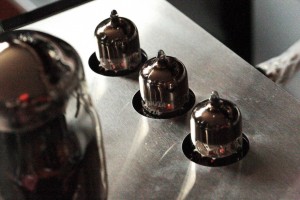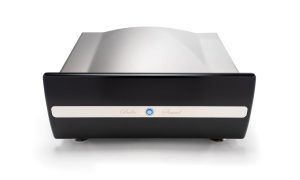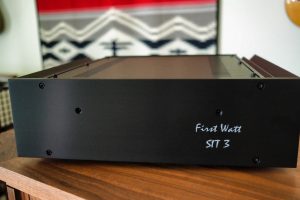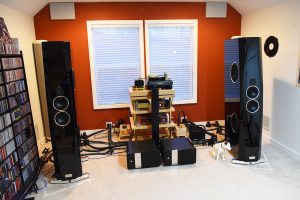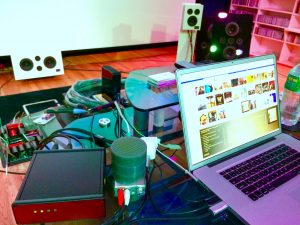I was quite excited when I received notice from Positive Feedback Editor Doc David that there was a Pass Labs XA25 Class A stereo amplifier available for me to write about for Positive Feedback (photo below).
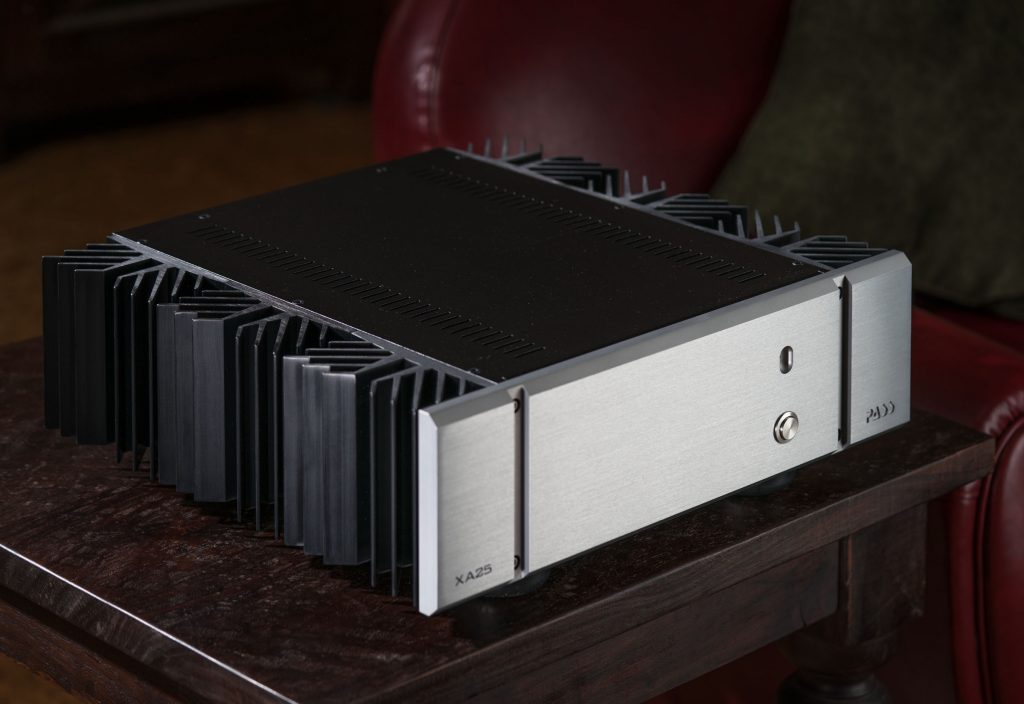
I had been mightily impressed with the 18 watt per channel (into 8 Ohms) First Watt SIT-3 single-ended amplifier (photo below) that I had wrote about last summer (HERE), so I was really curious to hear what the somewhat more powerful Class A XA25 at 25 watts per channel (into 8 Ohms) would perform like in comparison.
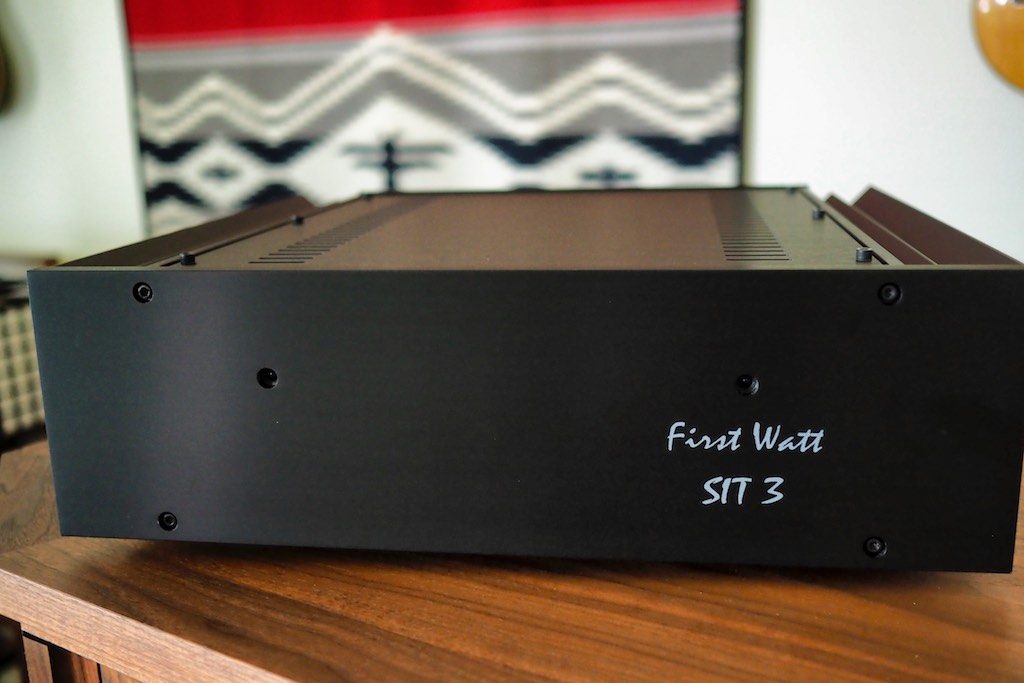
However, before I jump into the nuts & bolts of the Pass Labs XA25 amplifier, allow me to tell you about Nelson Pass, head honcho of Pass Labs, First Watt, and PASSdiy.
Nelson has been a central figure in the audio design world since the mid-1970s, however Nelson's passion for all thing's audio goes back to his youth, when he and his neighbor friend built a lot of DIY projects, starting with loudspeakers when he was 15, and then getting into amplifiers a couple of years later.
Nelson was born in Massachusetts, and his family moved to Los Angeles in 1957, and then to Santa Rosa in 1958, where he grew up as a youngster until he went to the University of California, Davis (UC Davis) in 1969 to study physics. Nelson earned his Bachelor of Science in physics in 1974.

Photograph by David W. Robinson, copyright (c) 2018, all rights reserved.
During his time as a physics student at UC Davis Nelson founded his own company to design and manufacture loudspeakers, called PMA, and was also hired by ESS to do research and development related to loudspeaker crossover and enclosure design work. Nelson arrived at ESS just before Oskar Heil, who developed the famous ESS AMT 1 "Air Motion Transformer" loudspeaker.
Nelson worked at ESS during 1972 and 1973, a period when he gained a lot of knowledge about audio circuit designs through studying the schematics for op-amps in the National Semiconductor application books, and by repairing all brands of amplifiers for Sun Stereo as a service manager.
During that period in audio, interest in solid-state amplifiers began to eclipse interest in vacuum tube amplifiers, as audio enthusiasts began to desire more powerful amplifiers for the less sensitive loudspeakers that were becoming more commonplace.
A lot of the solid-state amplifiers of that period were using Class AB or Class B designs, but they didn't sound too good compared to the Class A vacuum tube amplifiers, so interest rose in developing high-powered Class A solid-state designs that had better sound quality.
Nelson told me that his first unique amplifier design was in 1973, a Class A solid-state design. Nelson continued to incorporate what he was learning about sound quality and solid-state circuits into his own amplifier designs, and in December of 1974 Nelson and a colleague from ESS, René Besne, left ESS and founded Threshold Audio, the same year that Nelson graduated from UC Davis with a physics degree.

Nelson designed the amplifier circuit and selected the circuit components, and René did the industrial design to develop the amplifier's appearance and ready it for production. Their work resulted in the Threshold 800A amplifier (above), which was a Class A amplifier that had 200 watts per channel output into 8 Ohms, with an innovative dynamic bias approach that helped reduce power consumption and heat while maintaining Class A sound quality. The Threshold 800A amplifier would go on to be a favorite of audio engineer and founder of Stereophile, J. Gordon Holt, as well as audio enthusiasts around the world.
Pass Labs
Nelson left Threshold Audio in 1991 to found Pass Labs so he could enjoy broader investigation into his own audio design interests. Today through Pass Labs Nelson offers a full range of audio electronics including amplifiers, preamplifiers, integrated amplifiers, and even a headphone amplifier.

Pass Labs' current power amplifiers cover a broad range of audio enthusiast interests from the massively powerful and beautifully constructed X600.8 monaural amplifiers capable of delivering 600 watts of superb performance into 8 ohms for the most challenging loudspeaker loads, all the way down the power scale to the svelte XA25 stereo amplifier that delivers 25 watts per channel into 8 Ohms—the subject of this article—that has been receiving accolades from reviewers and customers about its lower-powered musical finesse.
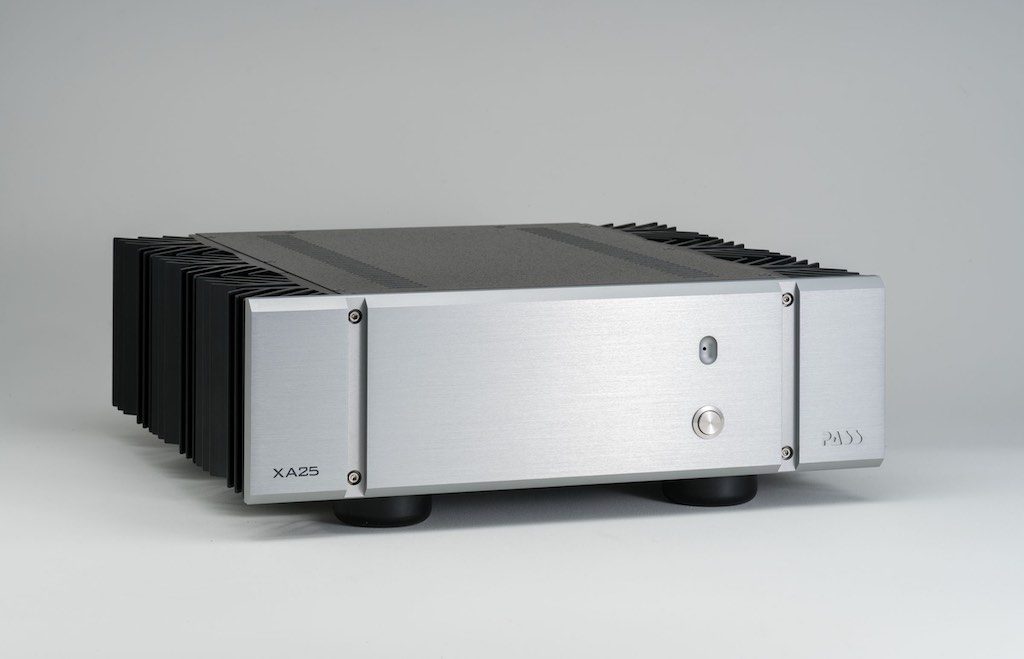
Now allow me to take you back in time for a moment to the late 1980s and early 1990s, a period of time when audio enthusiasts in America began to become interested in simple 1930s vintage, and vintage-inspired, low-powered single-ended-triode (SET) vacuum tube amplifier designs, due to their exceptionally musical sound quality, and relative affordability.
There really was no one during the late 1980s and early 1990s building affordable and simple single-ended analogs of SET amplifiers with solid-state devices, until in 1997 when Nelson released the Pass Labs Aleph 3 (below).

The Aleph 3 was relatively low-powered at 30 watts per channel, and was described by Nelson as "… the first of the newest generation of amplifiers from Pass Labs. This design results from my commitment to create the best sounding product, a simple circuit having the most natural characteristic. The Aleph 3 integrates power MOSFET devices and pure single-ended Class A operation in a simple two-gain-stage topology with the sole purpose of recreating subjectively natural sound (circuit below - Jeff)."
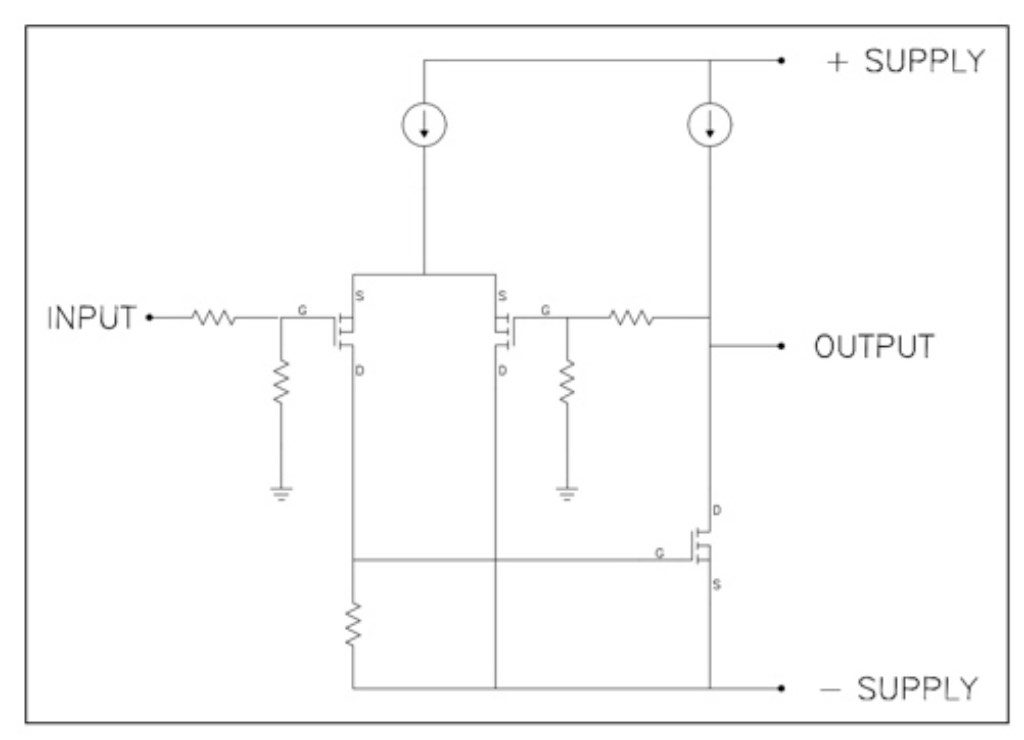
While I had very much enjoyed the musical delights of low-powered single-ended triode or pentode amplifiers (SET and SEP, respectively), intrigued by the Pass Labs Aleph 3, I bought one in 1997 to see how it compared to the vacuum tube amplifiers I was familiar with.
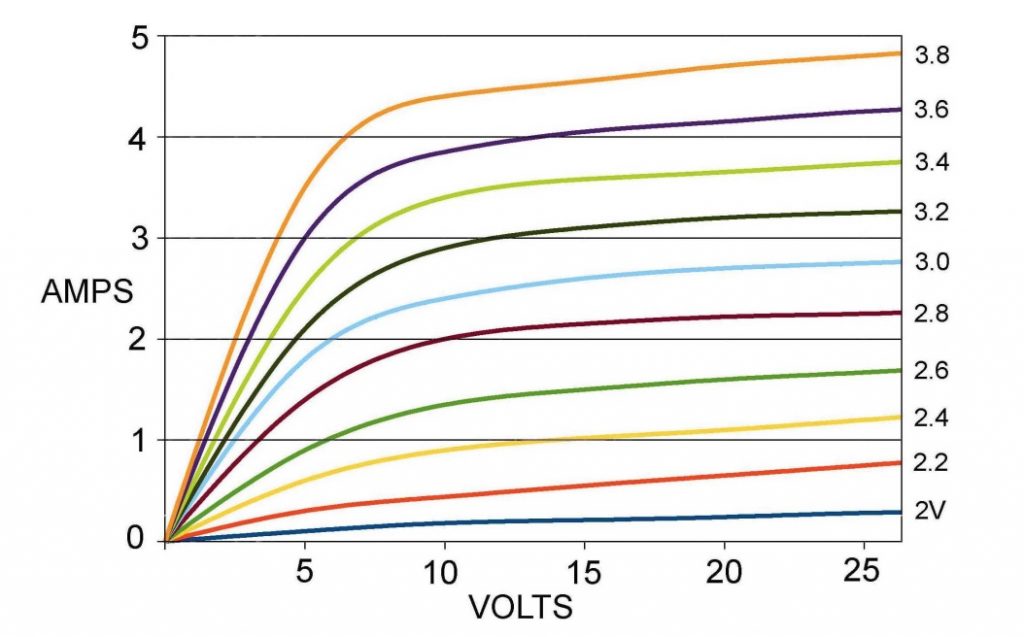
The Aleph 3 used MOSFETs in a simple single-ended Class A circuit, and it turns out that MOSFETs (and JFETs) have power curves (above) that look quite similar to the power curves of pentode vacuum tubes (below).
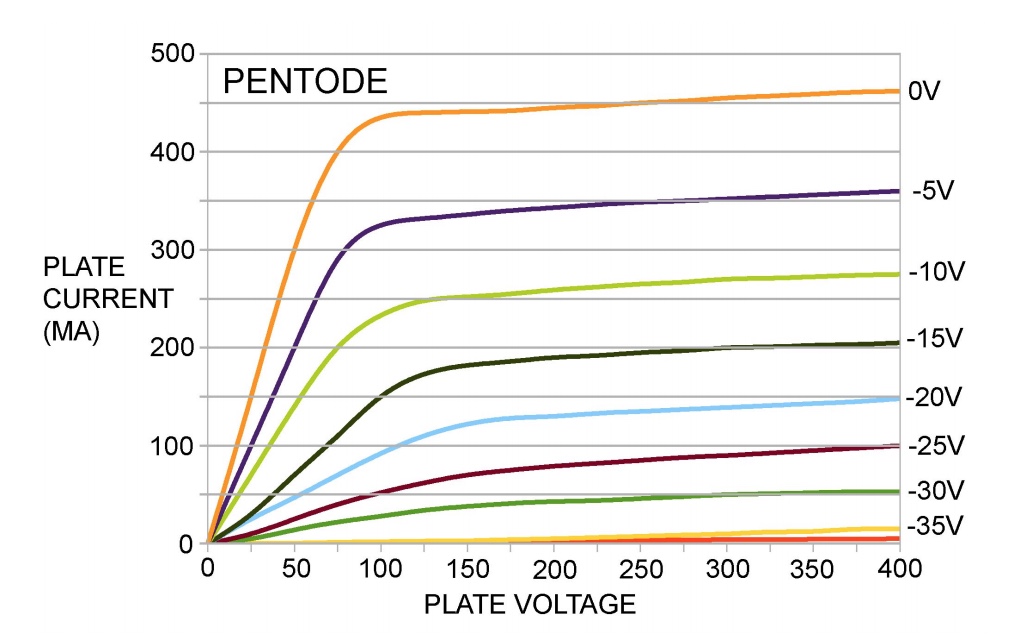
Over the years I have enjoyed the single-ended pentode circuits I have listened to, like that of the 5-watt per channel Almarro A205A integrated amplifier, for example, that uses its EL84 vacuum tubes in a simple single-ended pentode circuit, and which I still enjoy listening to today powering my vintage Altec 832A loudspeakers.
I thought the Aleph 3 compared favorably with the SET (and SEP) designs I was familiar with, but it had the added benefit of 30 watts per channel output, which opened up a broader range of loudspeaker compatibility than most SET vacuum tube amplifiers could accommodate.
I loved the Aleph 3's no-nonsense appearance with its huge heat sinks encircling the chassis, its ultra-reliability, and its low cost of maintenance (no expensive vacuum tubes to replace), not to mention that its power output of 30 watts per channel sounded great on my Spendor SP-1/2 loudspeakers in the apartment I lived in at the time.
I thought the Aleph 3's price of $2400 USD was fair as well, and it was something that I could actually afford to buy as an audio enthusiast back in 1997. In 2019 dollars the Pass Labs Aleph 3 would go for $3836 USD, which is reasonably comparable to the Pass Labs XA25 stereo amplifier's $4900 USD MSRP that is the subject of this article.
The Aleph 3's simple design, excellent sound quality, greater loudspeaker flexibility, high reliability, low cost of operation, and affordable price made the Aleph 3 a hit with audio enthusiasts, and for the first time there was a single-ended solid-state design that was a viable alternative to low-powered SET or SEP amplifiers.
First Watt and Pass DIY
In addition to his passion for Pass Labs proper, Nelson is equally passionate about his First Watt and Pass DIY enterprises.

Nelson had become intrigued by the performance possibilities of low-powered amplifiers and wanted to continue his exploration into interesting low-powered amplifier designs (and other stuff), which didn't really fit into the Pass Labs product lines.

Towards that end, in 1998 Nelson founded Pass DIY and First Watt to explore novel amplifier designs in an environment unfettered by commercial concerns.
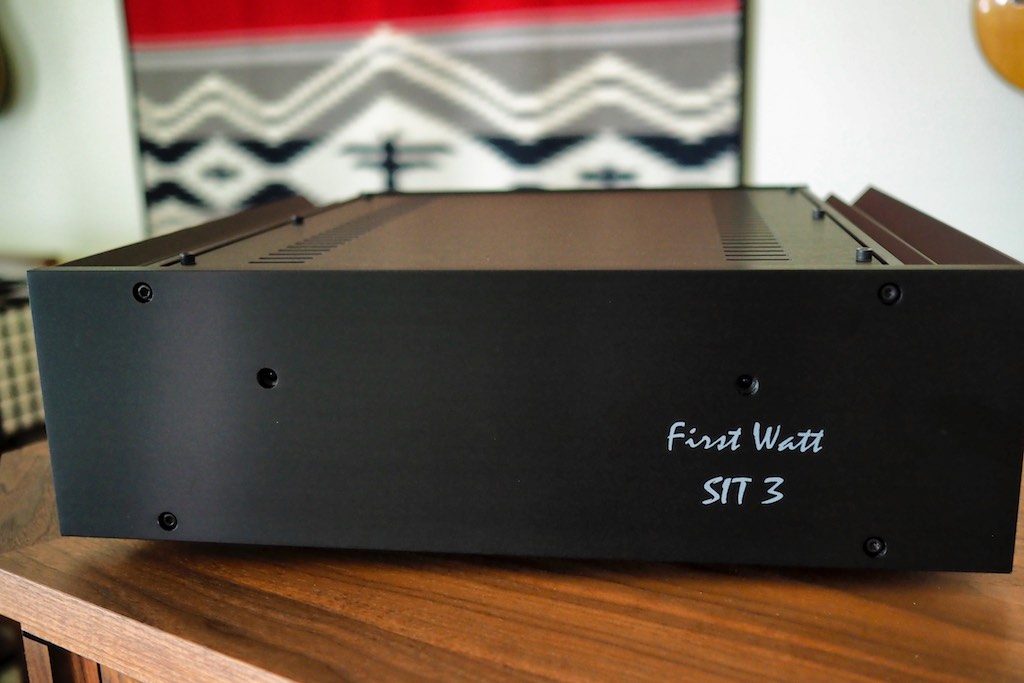
Nelson's long involvement in and appreciation for do-it-yourself (DIY) audio is described on the Pass DIY website.

Nelson is also a regular contributor at diyAudio, and is heavily involved in—and helps sponsor—the Burning Amp Festival, which is a major service to the DIY community.

Nelson is unique in that he also has a passion for educating audio enthusiasts, and helping us regular folks get great equipment into our systems with simple and affordable DIY designs.
I think it is really cool that Nelson helps enthusiasts achieve superb performance by offering his DIY designs essentially for free, allowing enthusiasts to build up great sounding components for little more than the cost of the parts (diyAudioStore).
I want to try some of Nelson's DIY designs in the future and tell you about them, because there are some truly great options for hifi enthusiasts that are very affordable, and learning how to "voice" a component to your tastes, and make it sound complimentary to the rest of one's system, is an valuable skill to develop.
The Pass Labs XA25 Class A Stereo Amplifier ($4900 USD)
Now onto the subject of this article, the Pass Labs XA25 Class A stereo amplifier (photo below).
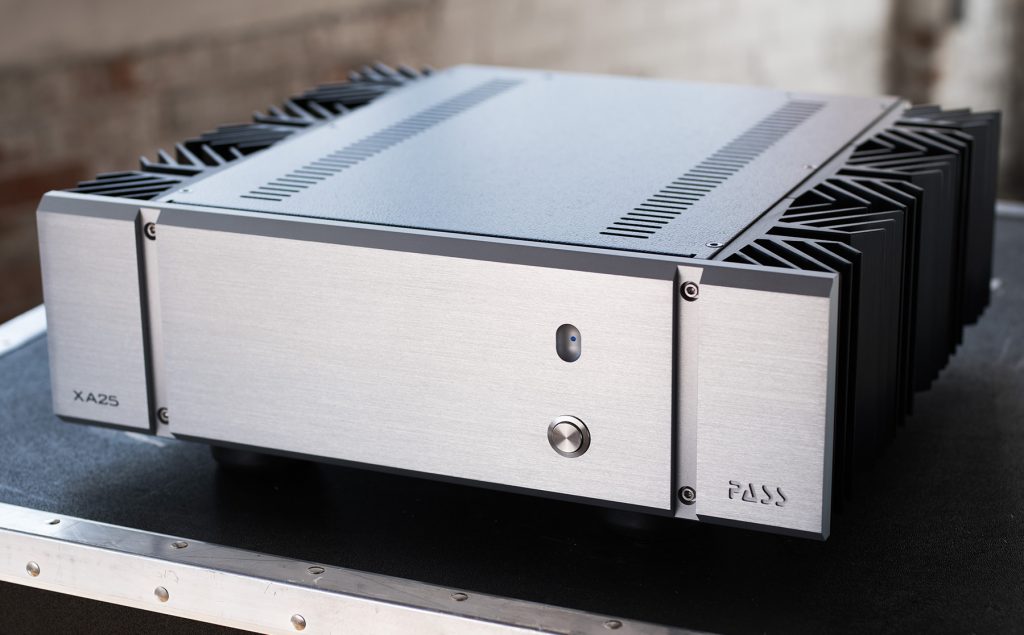
Let me start with a general description of the Pass Labs XA25 Class A stereo amplifier using a few excerpts from its owner's manual:

"The XA25 measures 17"w x 17.4"d x 6"h and weighs 45 pounds. You may place it wherever you please, but not directly on carpet - it is going to need lots of free air for adequate cooling. There needs to be space above and unobstructed space around the sides to allow for proper air flow. This is a factor in reliable operation and long life. … At idle the XA25 will consume 240W from the AC mains."
"The XA25 accepts a single-ended (RCA / Cinch) input connector. The input impedance is 47 Kohm making the XA25 compatible with either tube or solid-state line stage preamplifiers or source components with a built-in volume control."
The rear of the XA25 is equipped with a pair of Furutech binding posts for each channel, four total. The binding posts are marked red and black. The Red output connector connects to the Red (+) of your speakers and the Black connector will connect to the Black (-). The Black output connector is at circuit ground. You can use it to connect to powered sub-woofers if you like."
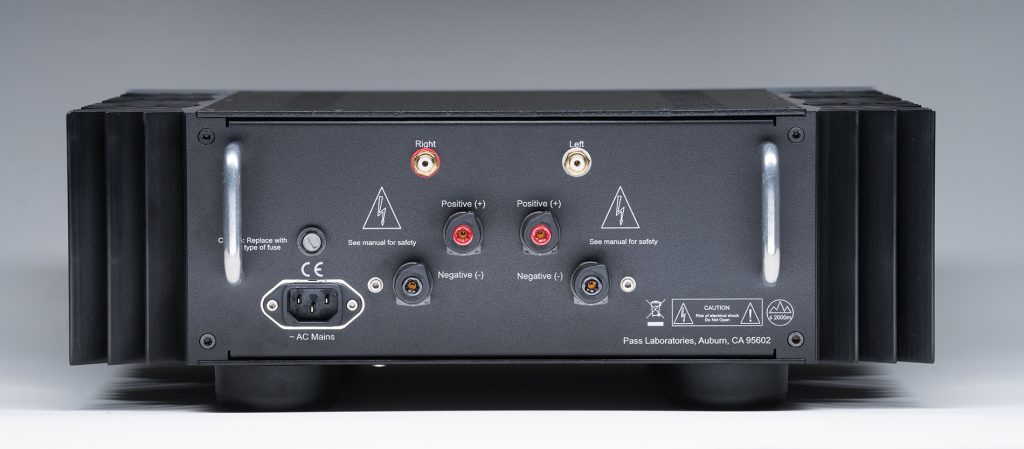
"The amplifier is stable into any load which does not dip below 0.5 ohms, but it will protect itself by shutting off any channel which outputs more than 10 amps (200 watts peak into 2 ohms). The protection circuit is reset by turning the amp off for a few moments and then turning it back on."
"The Furutech binding posts deserve special note - in keeping with the requirements of Class 2 circuits in North America they are fully insulated. Speaker cables connected as intended will have no exposed conductive metal. The Furutech posts accept banana, spade, bare wire or pins with a diameter of 4.5mm or less. Bare wire, pins and spades socket into the binding post only from the bottom. The nuts on the binding posts should only be finger tight. Never tighten with wrench or pliers."
"Once the speakers have been connected in observation of the proper regulations and with the observation of polarity and phase you may attach the input cables and power cord. It is always advised that the power cord is the last connection made and the first to be removed."
"The XA25 takes approximately an hour to fully warm up and sounds better as it does."
"You are now ready to play music. Turn the level at the source or preamp to a low level. Press the power switch on the front panel of the XA25, the blue LED above the power switch will light. Turn the volume up to your preferred listening level. Sit back and enjoy!"
Before I get into what I heard while listening to the Pass Labs XA25 Class A stereo amplifier, allow me delve a little more into the details of its design.
In chatting with Nelson about the circuit of the XA25 amplifier, he told me "The initial concept dates back to 2013 when I began considering the big Ixsys power transistors (photo below) as part of a solution. Prototyping on the XA25 began in early 2016, and the first shipment of the XA25 was in 2017."

When the Pass Labs XA25 Class A 25-watt (into 8 Ohms) stereo amplifier took on the role of being the entry level amplifier in the Pass Labs product line in 2017, it diverged from the aforementioned single-ended Pass Labs Aleph 3 and First Watt SIT-3 amplifiers, instead using a relatively simple push-pull Class A circuit.
Nelson told me this about the circuit:
"There are several unique things about the amplifier that make it a departure from the rest of the Pass Labs amplifiers. It's a fundamentally very simple topology made special by new parts and a unique approach to operating them in Class A without degeneration in the circuit (simplified circuit shown below). Years ago, we discovered that degeneration—that is to say placing resistors in series with FET source pins (or emitter pins for bipolar transistors)—has an impact on the sonic performance."
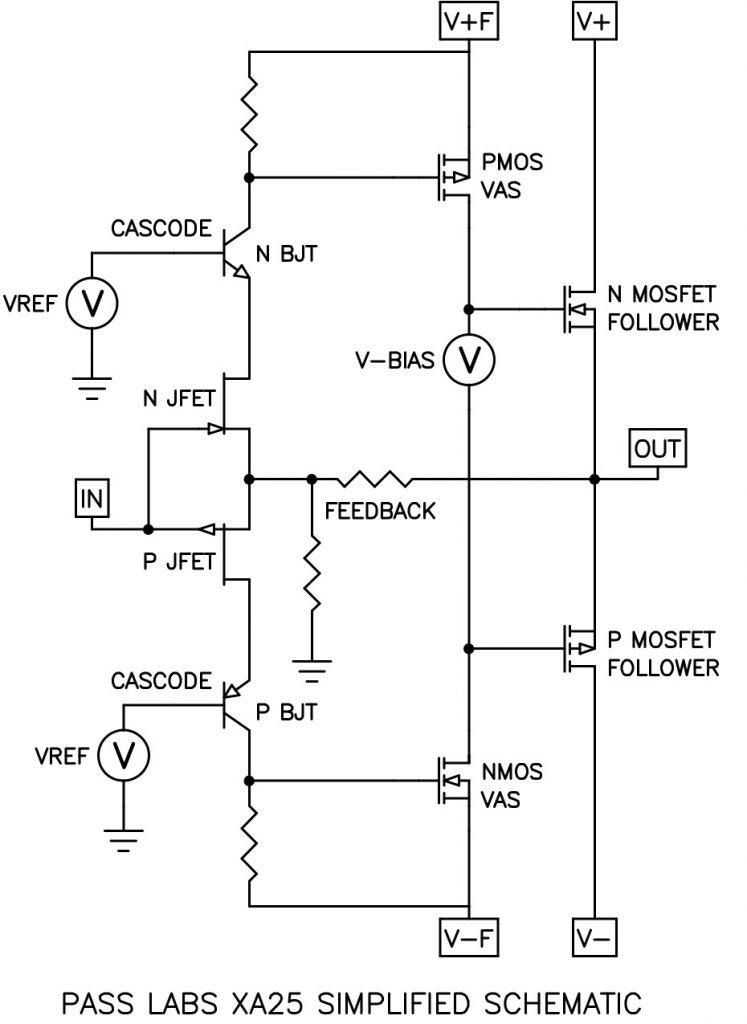
"My late business partner Joe Sammut was adamant about the qualitative difference, and could spot it in blind testing, so I took it seriously. The difficulty comes the fact that there is a reason why people use degeneration (the "other form of feedback") in gain stages—it stabilizes the characteristics of the parts so that you don't have to do precise matching and compensation to keep circuits stable. At the same time, it acts like the feedback it is. Routinely, your "no feedback" solid-state amplifiers depend on degeneration in the gain stages to control the performance, and so it does not achieve all the goals that make SET tube amps attractive."
"For those sonic reasons there have been several efforts at operating bipolar transistors undegenerated, and while the benefits have been noted, they have been accompanied by reliability issues. No need to mention names... ."
"I set removal of degeneration from power amps as a design goal and over the course of several years came up with a couple of reliable techniques that are employed for the first time in the XA25. The result is better dynamics and more "life" to the sound, and with power FETs it turns out that there are a couple more advantages that you don't see with bipolar transistors."
"Your basic FET character is "square-law," where the current through the device is a square function of the voltage across the control pins, the gate and the source. In this regard, the FET is very much like a tube."
"It turns out that push-pull Class A operation of square law devices can result in intrinsic cancellation of distortion to literally mathematical zero. Unfortunately, degeneration in the circuit introduces distortion to that arrangement."
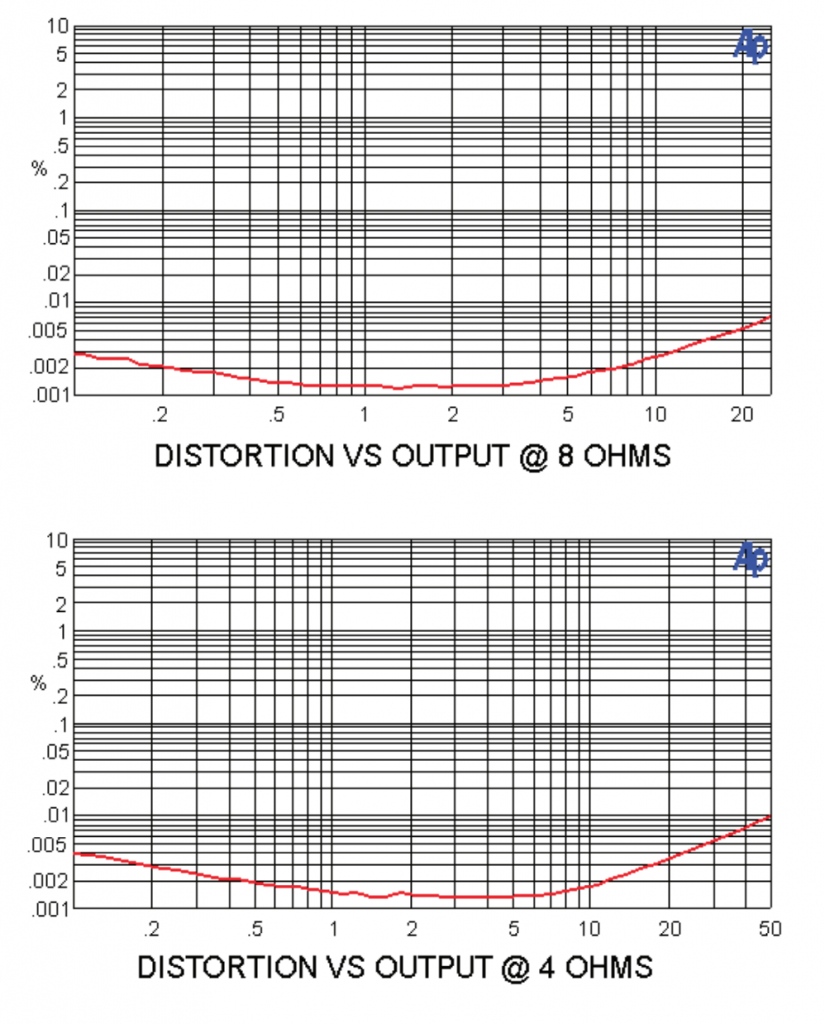
"The other interesting thing about square law devices is that their push-pull Class A envelope is naturally larger for a given bias current, which improves the efficiency of the circuit without recourse to special tricks. Again, degeneration spoils the party."
"And as I said, this subtle effect is not available to bipolar transistors."
When I first placed the Pass Labs into my stereo, it seemed much more powerful than its 12.5 watts into the 16 Ohms of my vintage Altec's would imply (25 watts into 8 Ohms).
I asked Nelson about the impression I had of how powerful the Pass Labs XA25 Class A stereo amplifier seemed compared to its 25 watts into 8 Ohms rating, and it turns out there was a simple answer to my perception:
"First off, it does have more power than its rating. It's not spec'd, but the last time I looked it started to clip at 80 watts into 8 ohms, which would make it about 40 watts into 16 Ohms. As I have pointed out, the other factor is a conventional Class A output stage achieved without degeneration, giving additional dynamic to the characteristic. Pretty much the only restraint on that output stage is the character of those big Mosfets, whose DC dissipation approaches 800 watts with transient current ratings up around 200 amps."
The Pass Labs XA25 Class A stereo amplifier reminds me of the classic American fairytale for children, The Little Engine That Could.
In The Little Engine That Could, there was a long train that had to be pulled over a mountain pass after its big engine broke down. Where the big engine failed, a small engine succeeded in pulling the difficult load of the long train over the mountain pass, all the while saying, "I-think-I-can".
The Pass Labs XA25 Class A stereo amplifier is The Little Engine That Could, and it is way more authoritative and powerful than its nominal 25 watt power rating would suggest.
The Associated Components of the Review System
The hifi setup used for this article about the Pass Labs XA25 Class A stereo amplifier was as described in my recent feature article for Positive Feedback, "The Duelund-Altec Project – Dare to Dream!" (which you can read HERE).
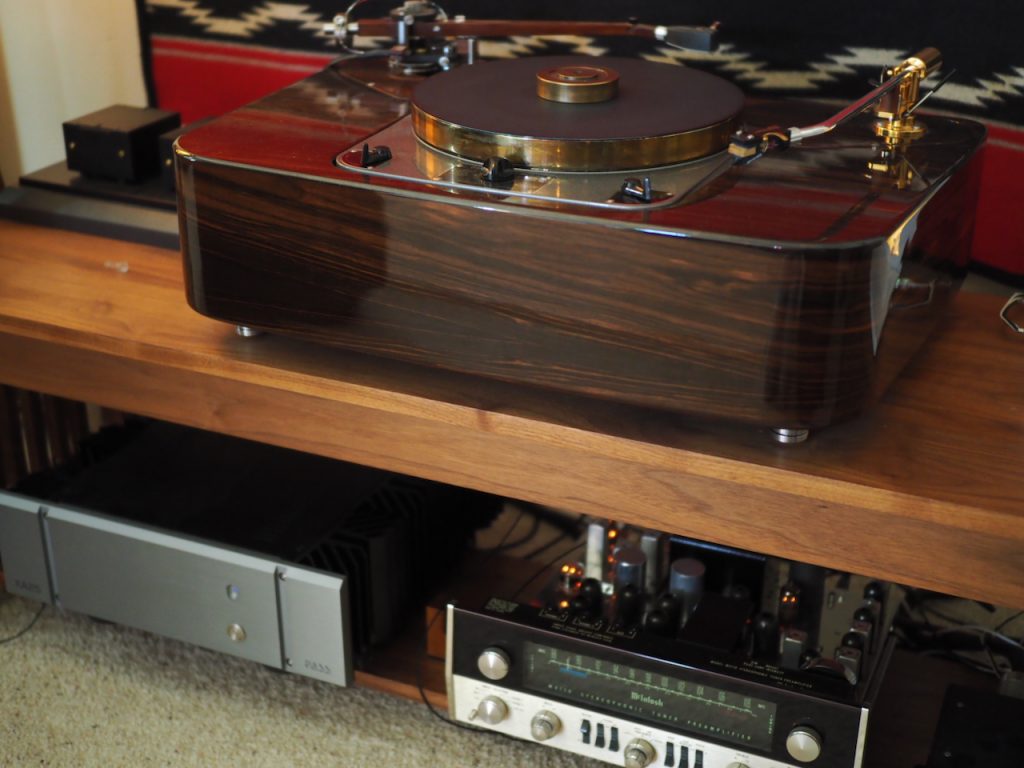
For an analog source I used my Classic Turntable Company hot-rodded Garrard 301 turntable in an Artisan Fidelity plinth, with a SPEC AP-UD1 Analog Disc Sheet turntable mat, a Peter Riggle Audio Engineering Woody SPU tonearm equipped with—what else—an Ortofon SPU Classic GM MkII stereo phono cartridge, stepped-up with an Intact Audio SUT that compliments the Ortofon SPU Classic GM MkII, and a Thomas Schick tonearm equipped with a Soundsmith Zephyr Mk III phono cartridge.
For a digital source I used my Apple MacBook to stream digital to my Mhdt Labs Havana vacuum tube USB DAC via my DIY Art of Tone tinned-copper USB cable, and for an FM source I used my McIntosh MX110Z tuner-preamplifier.
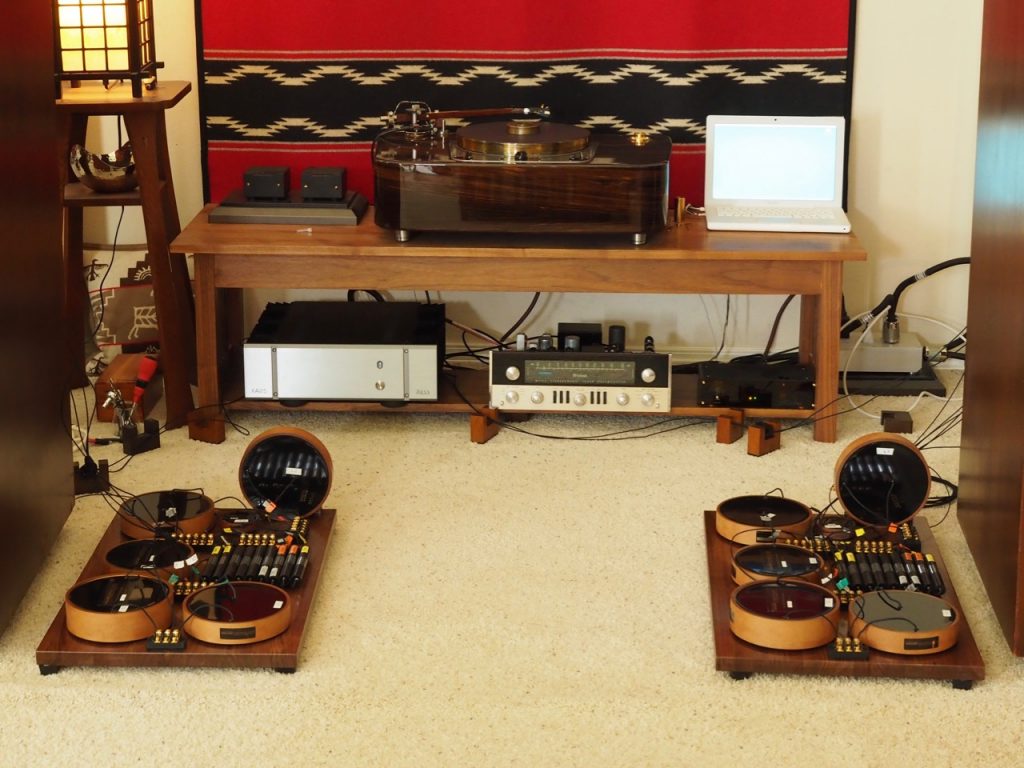
Amplification components included my vintage McIntosh MX110Z tuner preamplifier, a pair of vintage McIntosh MC30 monaural amplifiers, and of course the Pass Labs XA25 stereo amplifier that is the subject of this article.
For this article, I had hoped to use either a Pass Labs XP12 preamplifier, or a new preamplifier design that Nelson has been teasing me with for a while now, but as fate would have it, there's wasn't an XP12 available, and as Nelson told me, "Unfortunately, the press of other business has kept that preamp from getting finished. I expect to have it at the beginning of the year in a couple of forms. In the meantime, I'm sure the McIntosh is a fine preamp."
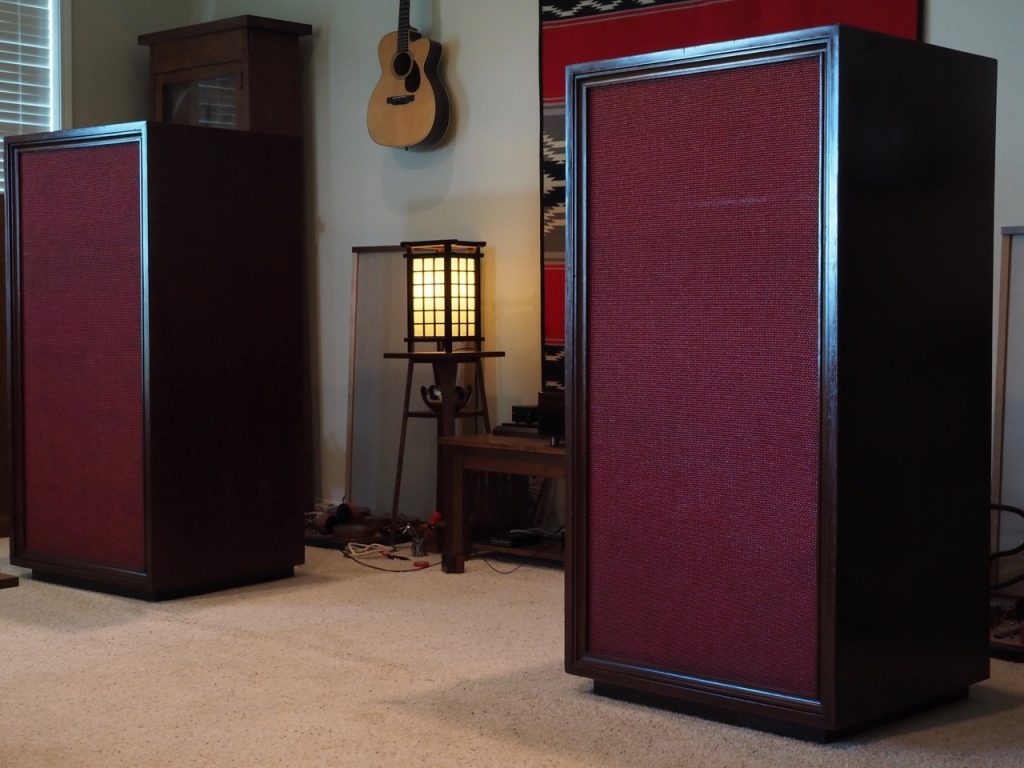
The loudspeakers in this system were the Duelund-Altec Project loudspeakers, consisting of the successful marriage of the latest state-of-art Duelund Coherent Audio CAST tinned-copper capacitors, inductors, and resistors—in a Jean Hiraga inspired crossover circuit (photo below)—with the historically important vintage Altec loudspeakers (above, below) that were custom made for the domestic use of conductor Leopold Stokowski in the early 1960s (hereinafter referred to as the "Stokowski" Altec's).

